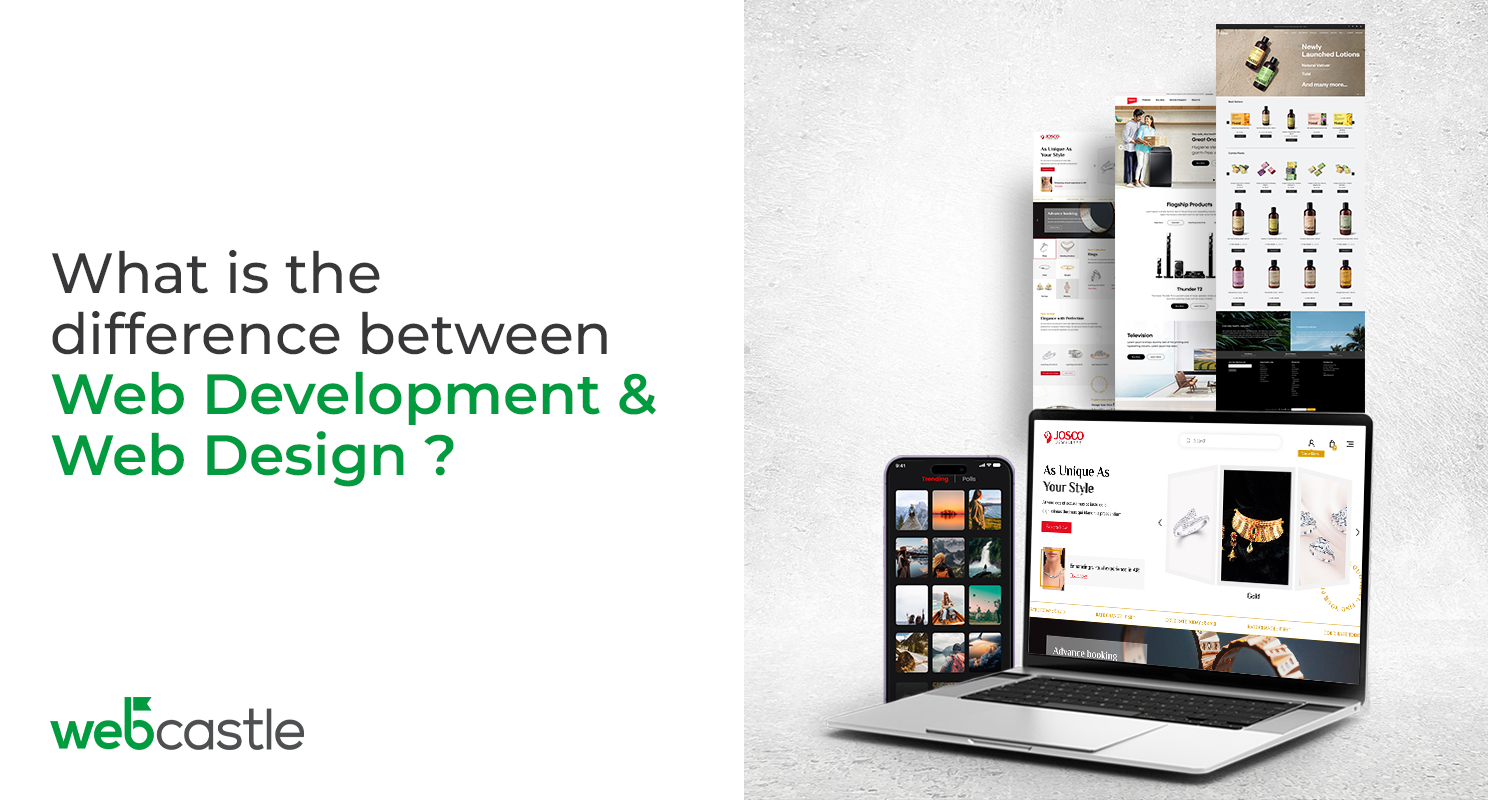
In the expansive realm of digital presence, the terms web development and web design often surface, carrying a common misconception of being interchangeable. To shed light on the subtle nuances between these two pillars of website creation, this guide aims to unravel the distinct roles of web development and web design. As we navigate through their unique contributions, we’ll also explore the significance of collaboration in crafting seamless online experiences.
At its essence, web design is the creative force behind the visual appeal and user experience of a website. It is an art form that goes beyond aesthetics, encompassing the creation of an engaging interface that captivates visitors. Web designers craft a harmonious blend of color schemes, typography, imagery, and layout to establish a visually pleasing design that resonates with the brand identity.
The role of web designers extends beyond mere aesthetics; they are digital artists meticulously selecting color palettes, fonts, and graphics that align with the brand’s essence. This precision ensures a captivating visual experience for visitors.
Web designers are architects of user experience, focusing on creating an intuitive and seamless journey for visitors. They strategically design navigation flows, optimize menus, and place calls-to-action strategically, all aimed at enhancing user satisfaction.
In the era of diverse devices, web designers prioritize responsiveness. Their work involves employing responsive design techniques to ensure a consistent and enjoyable user experience across desktops, smartphones, and tablets.
Contrary to web design, web development is the technical backbone responsible for translating design concepts into functional websites. Developers act as architects and builders, employing programming languages and frameworks to bring websites to life.
Front-end developers, or client-side developers, translate design concepts into visible website elements using languages like HTML, CSS, and JavaScript. Their focus is on creating a visually appealing, functional, and user-friendly interface.
Back-end developers, or server-side developers, concentrate on the behind-the-scenes functionality of a website. They manage databases, build server-side logic, and ensure smooth communication between the server and the front end, using languages like PHP, Python, Ruby, and Java.
Web developers implement interactive elements and functionality based on the design requirements, using JavaScript and frameworks like React or Angular. Their work brings features like contact forms, e-commerce functionality, and content management systems to life.
While distinct, web design and web development collaborate closely throughout the website creation process. Effective communication and collaboration between these domains are crucial to ensuring the final product aligns with both aesthetic and functional goals.
Clear communication and documentation are key during the design-to-development handoff. Designers provide developers with detailed specifications, ensuring a smooth transition from design concepts to functional elements.
Iterative Process:
Collaboration continues during the development phase, with designers and developers working iteratively to address challenges and make necessary adjustments. This ensures the final product meets both design and technical standards.
Collaboration is essential for responsive design. Designers create flexible layouts, and developers implement the necessary code to ensure the website responds seamlessly to various devices.
Also Read:Web Hosting Types and Services: A Complete Overview
Understanding the differences between web design and web development is vital for individuals considering a career in the digital realm. Each field requires a unique skill set, and personal interests and strengths often guide individuals toward one aspect over the other.
In conclusion, the collaboration between web design and web development is essential for creating successful websites. The distinction lies in their core focus areas – aesthetics and user experience for web design, and functionality and technical implementation for web development. By recognizing and appreciating the unique contributions of each discipline, individuals and businesses can embark on website creation projects with a holistic understanding of the dynamic digital landscape.

Call
